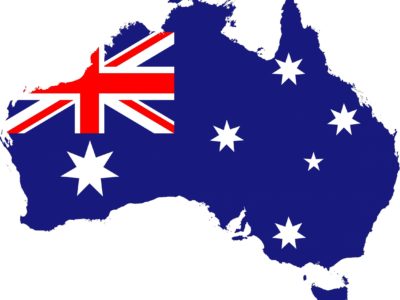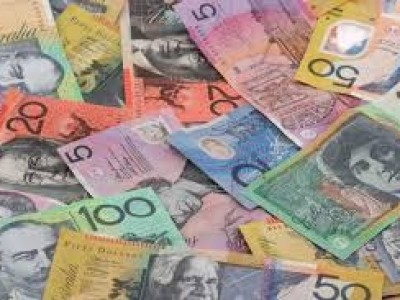What to Watch Out for in September: Aussie Edition
The month of September is highly active in the financial markets, as traders in the northern hemisphere return from summer vacation. For Australia, September represents the start of the spring season. As the weather warms up, so too will the economic calendar. Below are key events that traders will be closely monitoring this month.
September 1: Chinese Data
The month of September begins with Australia’s largest trading partner releasing a pair of closely followed economic reports. China’s National Bureau of Statistics will release its manufacturing and non-manufacturing PMIs for the month of August, giving investors a closer look at the health of the world’s second largest economy.
September 2: US Nonfarm Payrolls
Regardless of where you live, US nonfarm payrolls is one of the most important data releases of the month. The pace of hiring in the US economy accelerated in June and July. Another month of expansion in August could raise expectations for a Federal Reserve rate increase.
September 5: TD Securities Inflation
The Reserve Bank of Australia (RBA) has slashed interest rates twice this year to combat weak inflation, which is a rare problem for the world’s 12th largest economy.[1] The TD Securities inflation report is the most closely monitored month-over-month measure of Australian inflation.
September 6: RBA Interest Rate Decision; AiG Performance of Construction Index
The RBA will issue its next interest rate decision on September 6. Having just lowered interest rates to a record low, the RBA’s next move will be closely followed by the financial markets. The language of the official RBA statement could indicate whether policymakers are eyeing another rate cut later this year.
In addition to the RBA, the Australian Industry Group (AiG) will also release its closely followed performance of construction index for August.
September 7: Australian GDP
After a robust first quarter expansion, investors will be eager to learn whether the Australian economy can replicate that success in the second quarter. Gross domestic product expanded 1.1% in the first quarter, the strongest in three years.[2] Estimates of second quarter growth vary, but analysts generally agree that Australia maintained a solid growth pace.
September 8: Australia, China Trade Data
Australia will release July trade figures on September 8. China, Australia’s biggest trading partner, will also release its official trade figures on the same day.
September 9: Australia Home Loans; China Inflation
Australia’s housing sector is a major component of the economy. As such, month data on home loans and investment lending for homes are considered an important proxy of the housing market’s activity. Australian home loans rebounded in June, while investment lending rose sharply.[3] July figures will be released on September 9.
Separately, the Chinese government will release official consumer and producer inflation data.
September 12: Chinese Data
China will continue to dominate the headlines in the second week of September. Reports on retail trade, industrial production and foreign direct investment (FDI) will provide investors with clues about the health of the Chinese economy in the third quarter. All of these figures weakened sharply in July, a sign the economy was losing momentum.
September 13: NAB Business Confidence Survey
The National Australia Bank (NAB) business confidence survey provides a monthly snapshot of current business conditions in Australia’s private sector. The August report will be released September 13.
September 15: Melbourne Institute Consumer Inflation Expectations; RBA Bulletin; BOE Interest Rate Decision; US Retail Sales
Investors looking to gauge Australian inflation expectations usually follow the Melbourne Institute’s monthly report. Consumer inflation expectations weakened in August following another dismal quarterly CPI report.
Separately, the RBA will release its latest Bulletin report, which contains articles and speeches that discuss current economic developments impacting the economy.
In the European session, the Bank of England (BOE) will vote on monetary policy. The BOE slashed interest rates in August and expanded the size of its bond buying program.[4] Investors will be eager to learn whether the BOE continues its easing campaign in September.
Meanwhile, the US Commerce Department will report on August retail sales, a key proxy of consumer spending, which drives more than two-thirds of US economic activity.
September 19: New Zealand GDP
Australia’s neighbour to the south will issue its very own inflation report on September 19. The New Zealand economy expanded at a solid pace in the first quarter, a trend expected to continue in the April-June period.
September 20: RBA Meeting Minutes
The official transcript of the RBA’s September policy meeting will be released two weeks later on September 20. The minutes are closely followed by investors because they contain important language that could indicate future movements in monetary policy.
September 21: BOJ and Federal Reserve Interest Rate Decisions
September 21 is an important day for investors around the world as it contains two high profile interest rate decisions. Both the Bank of Japan (BOJ) and US Federal Reserve will issue rate decisions. While the Fed is expected to remain on the sidelines, the BOJ could announce new stimulus efforts in the wake of Prime Minister Shinzo Abe’s upper house election victory in July.
September 29: US GDP
Revised estimates of US second quarter GDP will be released on September 29.
September 30: UK GDP
The UK Office for National Statistics will close out the month of September with revised Q2 GDP data.
[1] Frank Chung (August 2, 2016). “Reserve Bank cuts cash rate to historic low of 1.5 per cent in August.” News.com.au
[2] Michael Janda (June 1, 2016). “GDP” Australia’s economy grows 3.1pc, fastest quarterly growth since 2012, says ABS.” ABC.net.
[3] Sam Bourgi (August 10, 2016). “Australian Home Loans Rebound in June; Investment Lending Rises Sharply.” Economic Calendar.
[4] Geoff Cutmore (August 4, 2016). “Turning it up to 11: Why the BOE is like Spinal Tap.” CNBC.
The post What to Watch Out for in September: Aussie Edition appeared first on Forex.Info.











